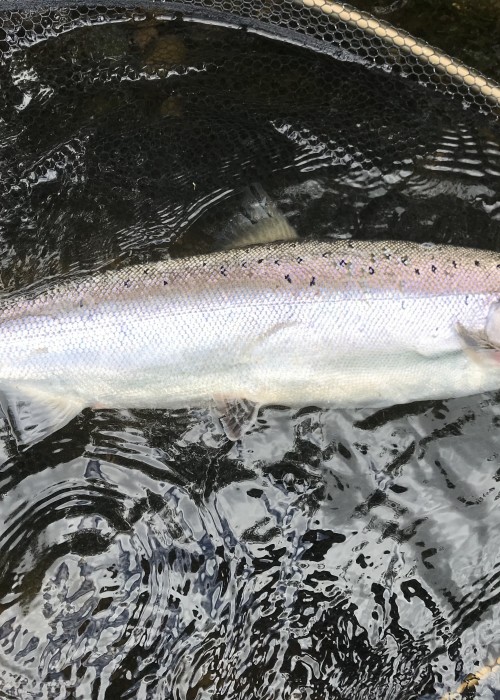
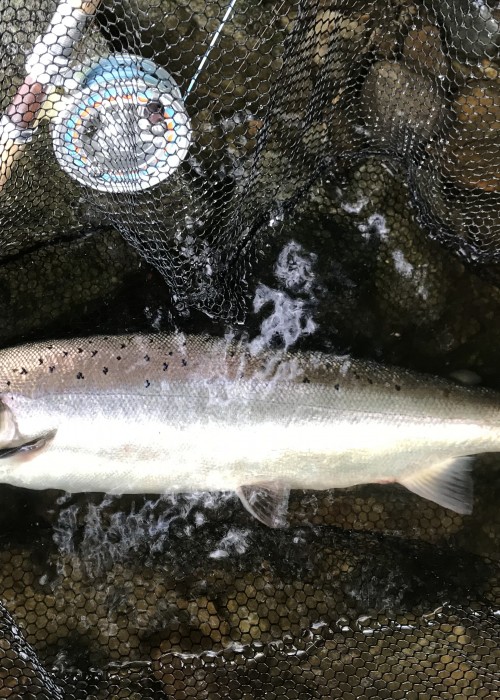

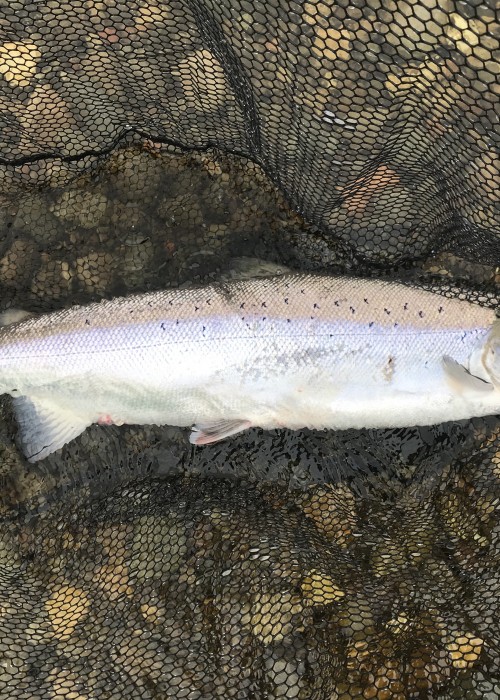
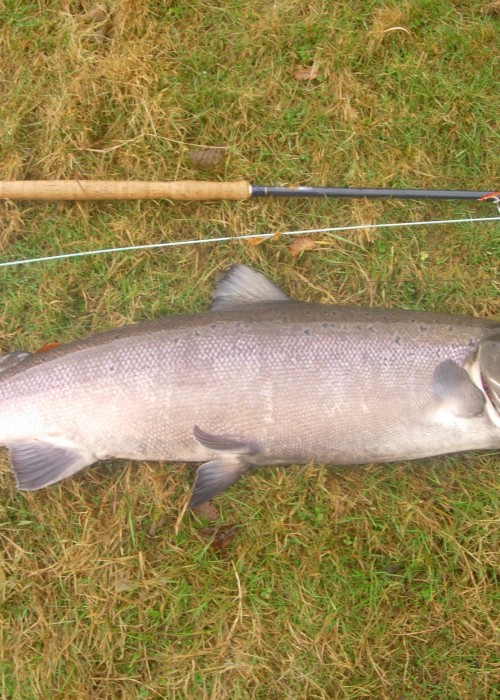
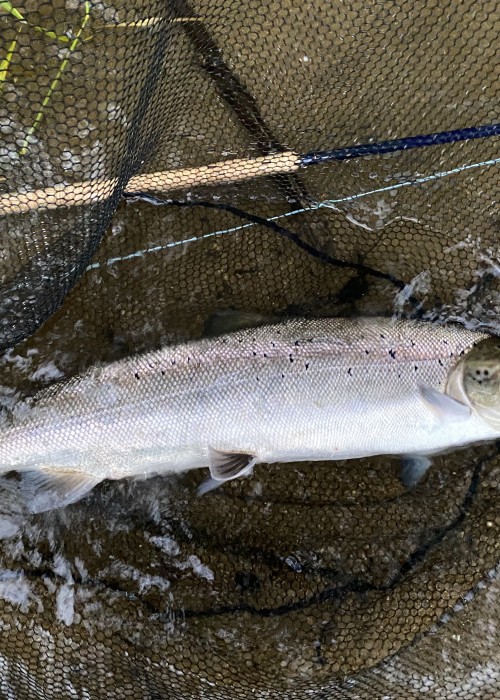
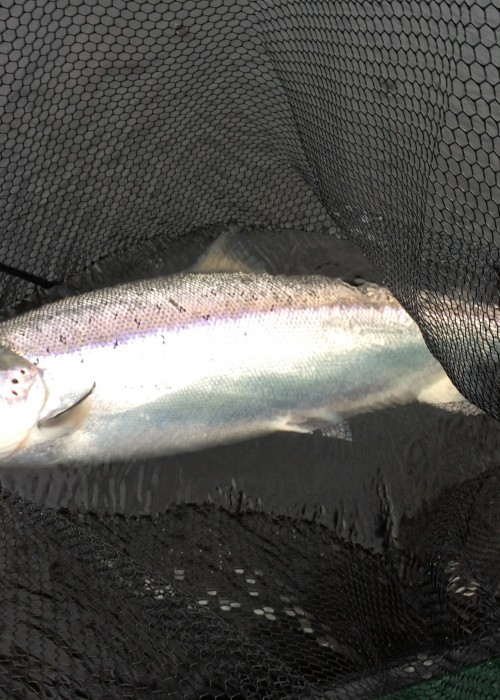
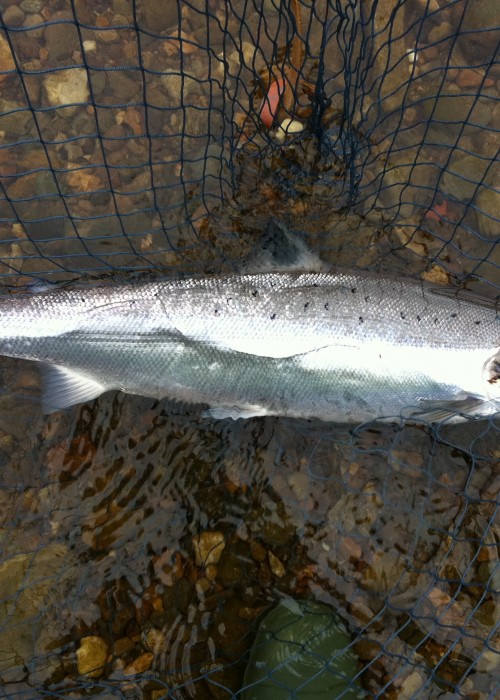
Professional Scottish salmon fishing guide career based advice on why a salmon takes a fly in the fresh water of a river when it's not in the river to feed.
This has always been a fascinating topic regarding why salmon that enter the fresh water river for the purpose of spawning (re-producing) will take a fly or lure when these fish are not in the river to feed. All Atlantic salmon do the majority of their feeding in the rich oceanic feeding grounds near the Faroe Isles & Greenland (or en-route) so what is it that makes them take a fly or a lure?
My personal thoughts on this topic are multi-faceted as there are differing types of salmon takes experienced on the Scottish rivers by salmon fishers. The first most easily identifiable salmon take is from a fresh run salmon that's recently entered the river and still has its oceanic hunting head firmly on or from older resident salmon that are alert and in the right frame of mind to take a fly. These fish are the easiest ones to catch as they've either not yet switched off their acute hunting ocean skills or something has triggered them into a responsive frame of mind resulting in good solid salmon fly investigations which are always a sign you've connected with one of these types of salmon.
Once salmon settle down into the fresh water river environment as resident fish they can become much more difficult to catch. These fish usually always become educated as they will often see flies & lures from salmon fishers in the river during most days of the week. This daily bombardment can often switch them off completely so different tactics are often needed to force a reaction. One of the effective tactics for salmon like this in warmer water conditions when salmon are lying deep in the pools is to fish your fly right down deep amongst them with heavy sinking tips and introduce erratic fly swim movement to seperate your fly from the normal boring & higher fly swing movements from regular fishers. This deep & erratic fly swim approach will often force a positive take from a salmon that would not otherwise be interested.
Sometimes salmon will also just snap at a fly when they are not otherwise interested via a territorial type of attack triggered by a fly that swims too close to their holding position. This behaviour stems back to their juvenile years in the river when young juvenile salmon parr become very territorial and space themselves by about a yard from other salmon parr. When older resident salmon are playing this game you really need to re-think your salmon fly size and go small with needle sharp hooks where a salmon might just hook itself as it snaps at the fly as you'll be unlikely to feel the take nor will the take develop like a normal salmon fly take does. A salmon can nip or mouth a fly without the fisher having a clue about what's just ocurred and I've observed this type of behaviour from high riverbank vantage points with my poloroids on many ocassions over the years where I've actualluy advised the fisher exactly when to tighten!
When I've personally tried the regular well-spaced salmon fly swings approach (or in warmer water conditions gone down deep with erratic fly movements) with no results I'll also then try a fast moving stripped Sunray Shadow salmon fly to try to ignite a resident salmon's pre-programmed desire to chase and attack. Again this is another level of salmon fly presentation phsychology that the fish will not be expecting to see so sometimes the reaction from a fish that sees this method is instantaneous and highly exciting for the salmon fisher too! Due to the often differing moods of salmon in the Scottish rivers it often pays to experiment with different sub-surface approaches. The best salmon anglers are those who know exactly how their fly waggles in the water and its exact chosen depth & speed at all times (sub-surface technicians). Follow this link to learn how to fish for salmon in Scotland and take your salmon fishing thoughts & fly presentation to a completely different dimension..